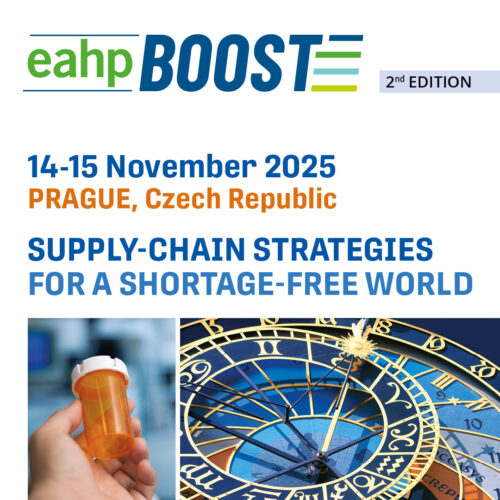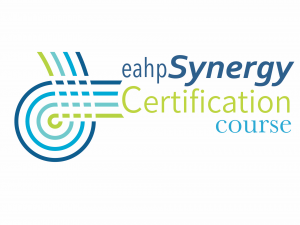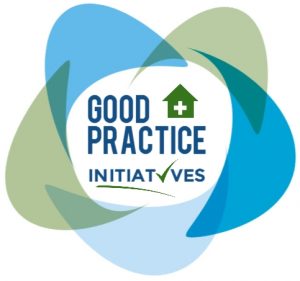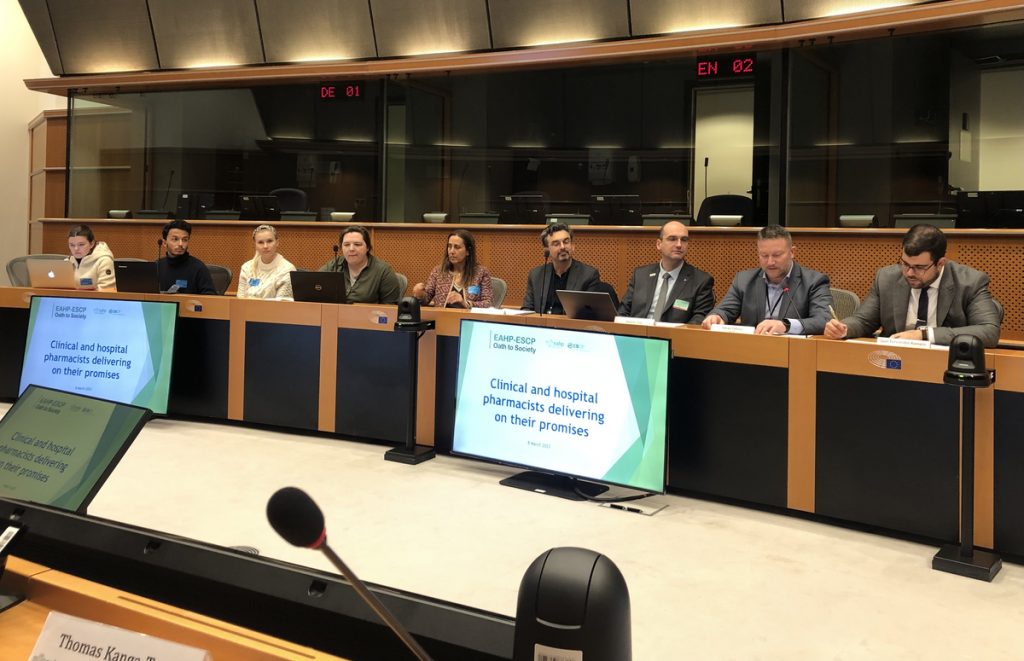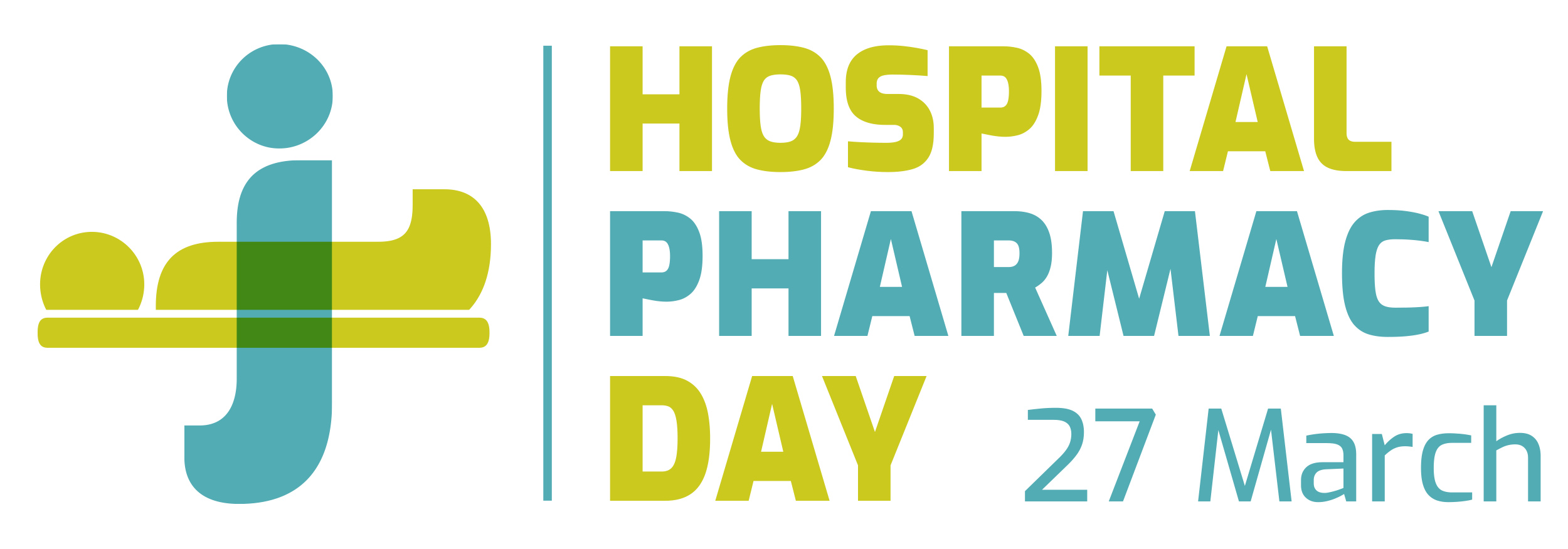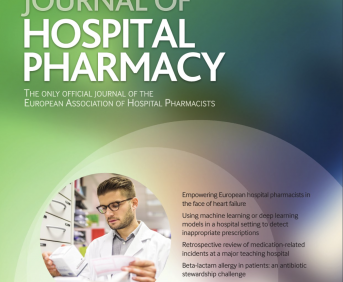PATIENTS AND CARERS’ EVALUATION OF MEMORY CLINIC FOLLOW-UP APPOINTMENTS
Pdf

European Statement
Clinical Pharmacy Services
Author(s)
Amparo Valls-Lattur
Supervisor: Agostina Secchi
Why was it done?
Background
Introducing a pharmacist prescriber (PP) in the Community mental health services for older people (CMHSOP) to support with follow-up appointments for memory patients as a new strategy as part of the community mental health transformation (1). The aim of this Service Evaluation was to evaluate the views of patients with dementia (and/or their carers) on a pharmacist prescribing led clinic.
What was done?
After diagnosis of Alzheimer’s Dementia some patients will be started on medication to treat the disease symptoms in an effort to reduce the rate at which their cognitive abilities will deteriorate. This medication will need titrating and monitoring for compliance and side effects (2).
This new service will allow consultants to focus on diagnosis of dementia while improving waiting times for community mental health services for older people (3).
How was it done?
Methodology
The data was collected from a memory clinic within a community mental health team for older adults. Data was collected from patients’ and/or their carers’ feedback in the form of a survey. The purpose of the survey was explained to the patients and/or their carers and those who took part placed the questionnaire anonymously in a box at reception. The survey responses were collected on a weekly basis from the box, allowing patients and/or their carers to complete the survey in their own time.
What has been achieved?
Results
During the period of the survey (February until May 2024), 27 questionnaires were received. The majority (21) were completed by carer/family member, and 6 were completed by the person being treated (patient). Patients and/or their carers had to answer 10 questions using a 5-point likert scale: from strongly agree, to strongly disagree.
The majority of participants strongly agreed that the service provided was of high standard. For example:
• the majority agreed that the prescribing pharmacist was polite and considerate
• patients and their carers felt listened to and allowed them to ask questions
• their questions were answered
• everything was explained in a lay language
• they were provided with enough information about their medication
• patients and their carers or families felt involved in their care and treatment
• the majority of patients had confidence in the prescribing pharmacist
• they were given information on who to contact if they had any problems.
What next?
Conclusions
This project showed a positive impact of a new service introduced in the CMHSOP. The pharmacist prescribing role in mental health is a new service and has shown that both patients and their carers have all expressed a positive view of this new clinic. Both patients and carers found the pharmacist caring, professional and attentive to address their concerns.
Future work will look at quantifying how this new service has reduced the waiting time for these patients to be seen or followed up.
Improving difficult-to-manage medication usage: a pharmacist led education programme for hepatitis delta virus (HDV) patients
Pdf

European Statement
Clinical Pharmacy Services
Author(s)
Sabrina Trivellato, Daniele Mengato, Francesca Venturini
Why was it done?
Bulevirtide, available in Italy since June 2023, is the sole approved drug for treating long-term HDV. It represents a precious clinical opportunity but its technical features make it a complex therapeutic regimen to handle. It is commercially available as a powder for injection that needs daily reconstitution before subcutaneous use, has strict storage requirements (+2/+8°C), and requires familiarity with needles and syringes. As home therapy, this is the responsibility of the patient, who will therefore need to be enrolled in a PEP to ensure compliance.
What was done?
A Patient Education Programme (PEP) was implemented to support patients diagnosed with hepatitis delta virus (HDV) being compliant to a complex therapeutic chronic regimen.
How was it done?
In July 2023, a specific pharmacist-led PEP (named “EXPLAIN”) was defined. It consists of two phases: education & training; follow-up & assistance. After clinical examination, patients were received by pharmacists and introduced to the therapy thanks to a simulation kit. Posology, storage conditions and special warnings were described and the drug together with the administration kit was delivered. During the follow-up phase the pharmacist was focused on proofing medication adherence, discussing with the patient about any problems or ADRs and drug refilling. Quality of Life (QoL, measured through EuroQoL5) was adopted as an effectiveness outcome. Evaluation feedback on the service was requested as well.
What has been achieved?
Up to September 2023, 15 patients, with a mean QoL starting score of 72,5/100±15, are assisted by the EXPLAIN program. 12 of them already accessed the follow-up phase. A single episode of medium gravity ADR was reported, but it did not affect therapy continuation. Globally, an excellent reported medication adherence (98.5% of doses taken) was registered and the educational support of the pharmacist was considered to be “essential on positively approaching the medication”.
What next?
QoL, adherence and feedback on the received service have to be proofed after 6, 9 and 12 months as well, together with a regular viral load detection to confirm referred compliance. Although the EXPLAIN program has just started, it represents a promising PEP model to be adopted in the case of complex therapies, where continuity is crucial to ensure effectiveness and safety.
The real life of benzodiazepines in geriatric department : what about the patient ?
European Statement
Clinical Pharmacy Services
Why was it done?
Benzodiazepines and derivatives (BZD) are often prescribed over a long time period among the elderly for anti-anxiety and hypnotic purposes leading the eldery to become addicted to their treatment. However, on the long term, BZD are less effectives and may cause dependence and adverse effects (AE). It is necessary to reassess the treatment to avoid them.
What was done?
This study evaluates patients’ dependence on BZD and reassesses the treatment after explaining the AE to patients.
How was it done?
A questionnaire for patients taking BZD at home, were developed: at first, the questions were about the reason of hospitalization, BZD’s indications, initiation date, occurrence of AE and attempts to stop treatment.
Then, the ECAB dependence test (cognitive scale of attachment to BZD) was proposed.
Eventually, explanations about BZD long term AE and an information sheet were given to patients. A substitution with short half-life BZD, dosage reduction or treatment discontinuation was proposed to the patient in collaboration with the geriatrician.
What has been achieved?
The questionnaire was completed by 34 patients. Of these patients, 44.1% came for falls and/or confusions, 27 had one BZD at home and 7 had two. About the prescribed BZD, 80.5% were for hypnotic purpose, 19.5% for anti-anxiety purpose, and 9.8% had long half-lives (not recommended for elderly).
Of 41 BZD, 46.3% had been prescribed for over 10 years.
Amid the patients, 79.4% reported AE, including 21 fall cases, 11 confusion cases and 7 somnolence cases.
Only 13 patients tried to stop the treatment.
There are 18 patients with an ECAB score greater than or equal to 6 which indicates that they are dependent on BZD (sensitivity: 94%; specificity: 81%).
Eventually, after presenting BZD AE, 6 patients switched to a BZD with shorter half-life, 10 agreed dosage reduction and 4 agreed stopping the treatment. In total, a positive result was obtained in 58.8%.
What next?
BZD are still widely prescribed and very few are re-evaluated despite the risk of AE among the elderly (often poly-pathological and poly-medicated). Given the positive results after providing an information sheet on BZD AE, it would be interesting to extend this practice to the entire hospital.
IMPLEMENTATION OF PATIENT INTERVIEW IN CONNECTION WITH MEDICATION REVIEW IN AN INPATIENT PSYCHIATRIC WARD (submitted in 2019)
Pdf

European Statement
Clinical Pharmacy Services
Author(s)
Majken Nørskov Petersen, Dorthe Bonnerup, Louise Thorsen, Lona Louring Christrup, Sune Puggaard Vogt Straszek, Charlotte Olesen
Why was it done?
Medication review with patient interview provides the opportunity to clarify the patient’s overall drug intake along with identifying the patient’s experienced side effects. Medication review with patient interview we believe gives a more realistic picture of experienced drug related problems (DRP) and potentially DRP. This again makes the medication review more relevant and useful to the doctors.
What was done?
The initiative took place in the Department of Affective Disorders, at Aarhus University Hospital, Denmark. Initially, the medication review was performed by hospital pharmacists without patient interview based only on medical records. We implemented a patient interview to give a more clinically relevant medication review. The interview included a structured questionnaire on typical side effects of antipsychotics.
How was it done?
The cost of a new workflow is always weighed against the outcome. We therefore planned and conducted a pilot study. The cost was measured as the time used for the patient interview and it was 17 minutes on average. We used DRP as the outcome. DRP is an accessible measure for the immediate outcome of a medication review. Sixteen medication reviews without patient interview were conducted and the same 16 patients were interviewed for a second medication review. Patient interview increased the number of identified DRP from 52 to 68. Due to the interview 28 new DRP were identified and 12 DRP found before the interview were withdrawn due to irrelevance.
What has been achieved?
Patient interview has been implemented in one of three inpatient psychiatric wards and in one of four outpatient clinics where the pharmacists conduct medication review. The structured questionnaire has been further developed and now includes common side effects caused by antipsychotics, antidepressants, benzodiazepines and mood stabilizers.
What next?
We still use the pilot study to show how medication review can be more relevant by using patient interview. The hospital pharmacy in Aarhus works on several levels in order to implement medication review, preferably with patient interview.
INVOLVING PATIENTS IN A WORKSHOP FOCUSED ON COMMUNICATION SKILLS: A PROOF OF CONCEPT OF EXPERIENTIAL TRAINING FOR RESIDENTS IN HOSPITAL PHARMACY
Pdf

European Statement
Education and Research
Author(s)
Caroline Hache, Stéphane Honoré, Guillaume Hache
Why was it done?
The development of clinical pharmacy allows pharmacists to take patient-centered roles and responsibilities. However, patient-centered care requires a specific set of skills and training, such as patient-focused communication and conducting structured interviews. Thus, improvement of pharmacist-patient communication may lead to better clinical outcomes.
What was done?
We developed a workshop involving patients within the training programme of residents in hospital pharmacy. The workshop focused on communication skills needed to improve the quality and effectiveness of a pharmaceutical interview.
How was it done?
The workshop was developed jointly by two senior clinical pharmacists and a lecturer in education and communication science. The learning process integrated: working on participants’ perception of pharmacists-patient communication, didactic learning, training activities and evaluation. The assessment of the learning effect was performed by self-, peers-, and patient-scored charts. Patients’ feedback during the training activities and assessments was highlighted as the cornerstone of the learning process.
What has been achieved?
First, we built a competency chart on communication skills needed to perform a structured pharmaceutical interview. This tool has been validated by the patients and well accepted by the learners. It was used to assess the learning effect of the workshop, and may serve as a guide for the continuous development of junior practitioners. Secondly, the workshop has actually been implemented, with both the learners and patients expressing a high general acceptance and satisfaction. Finally, preliminary results show a learning effect assessed by both peers and patients.
What next?
The involvement of patients needs to be further expanded to the training programmes of undergraduate students, residents and clinical pharmacists. A future action planned is to develop a model with the French Society of Clinical Pharmacy (SFPC) for a national systematic training module: “Improving pharmaceutical interviews’ performance through effective communication”, involving patients.






